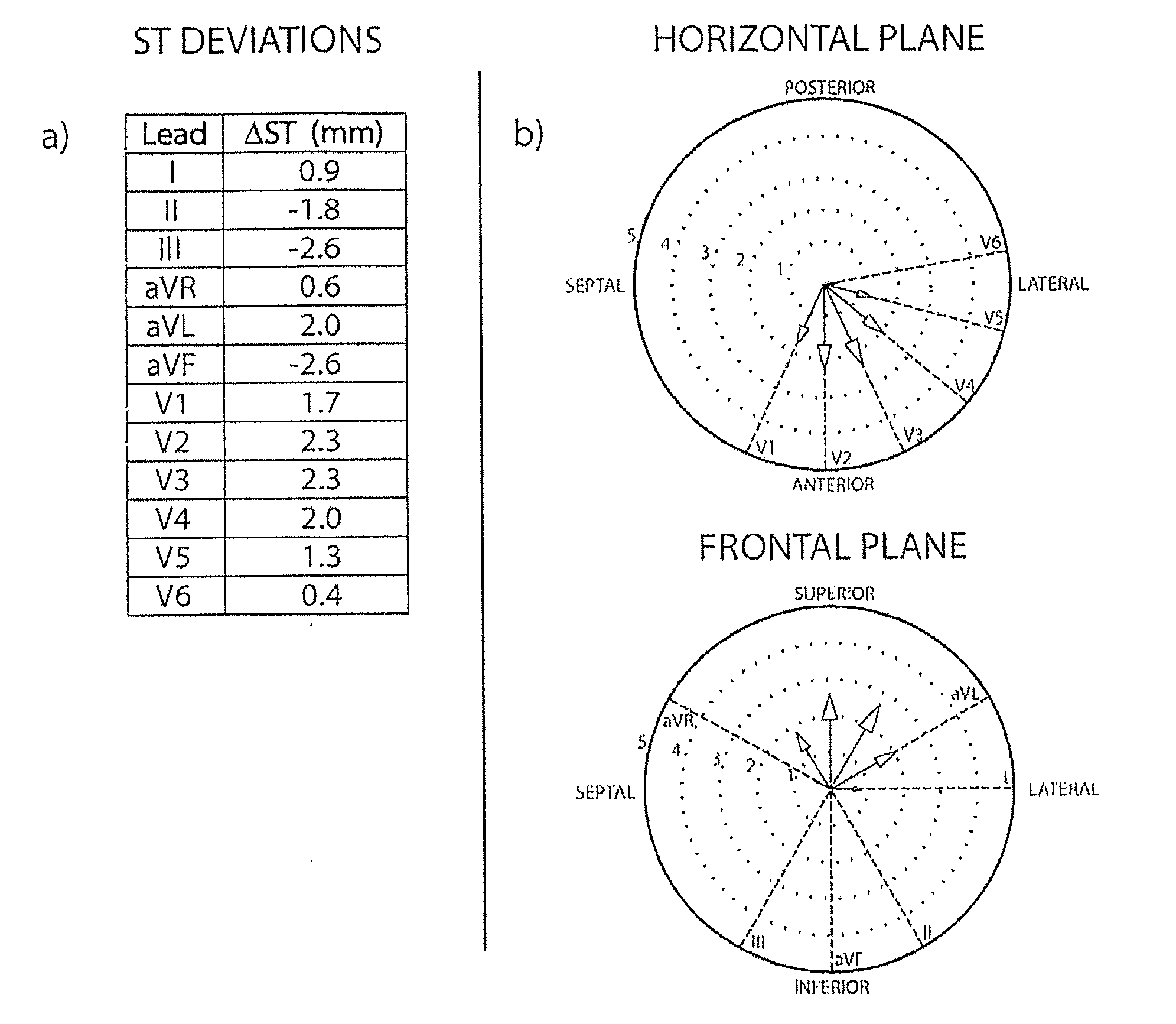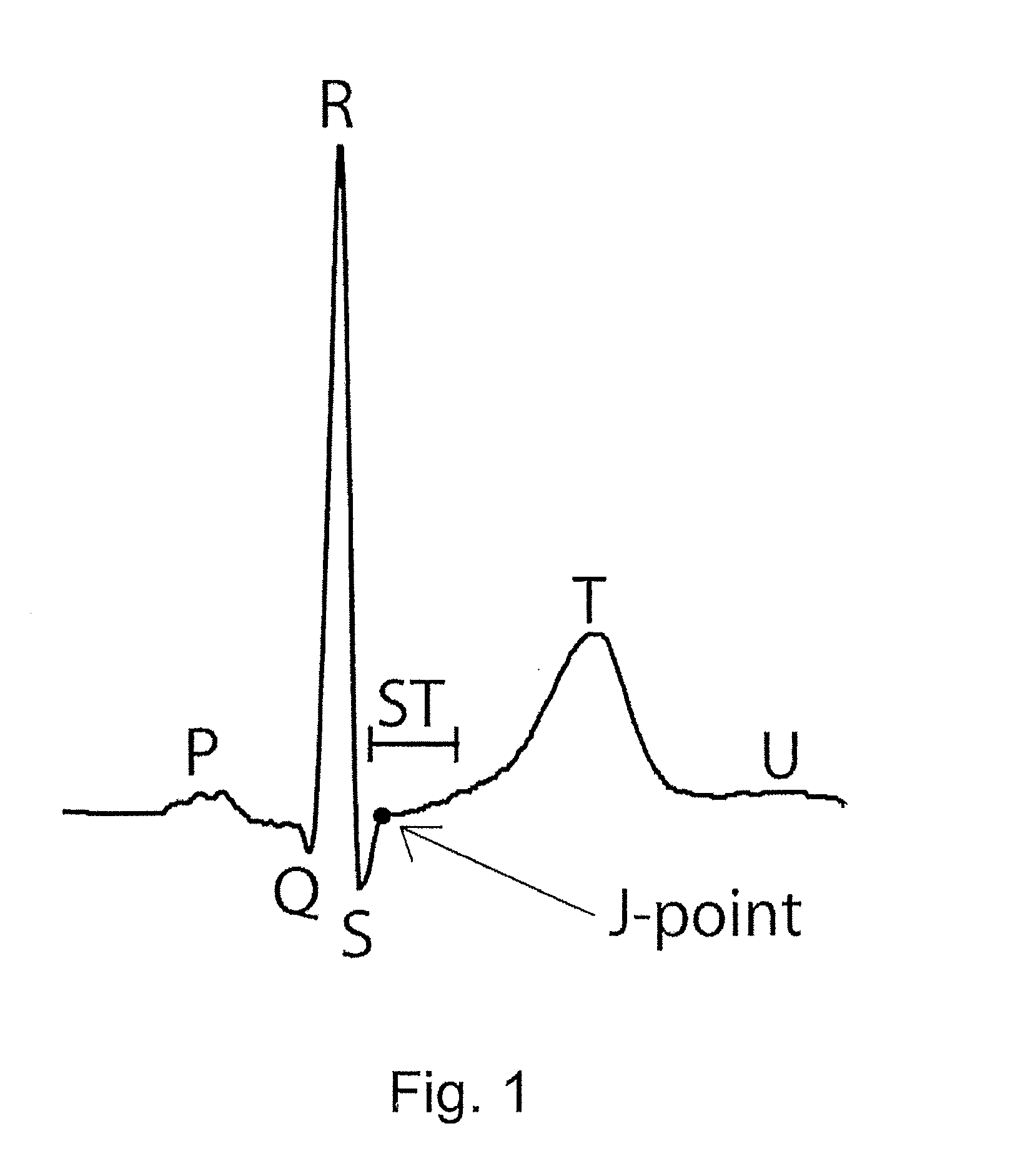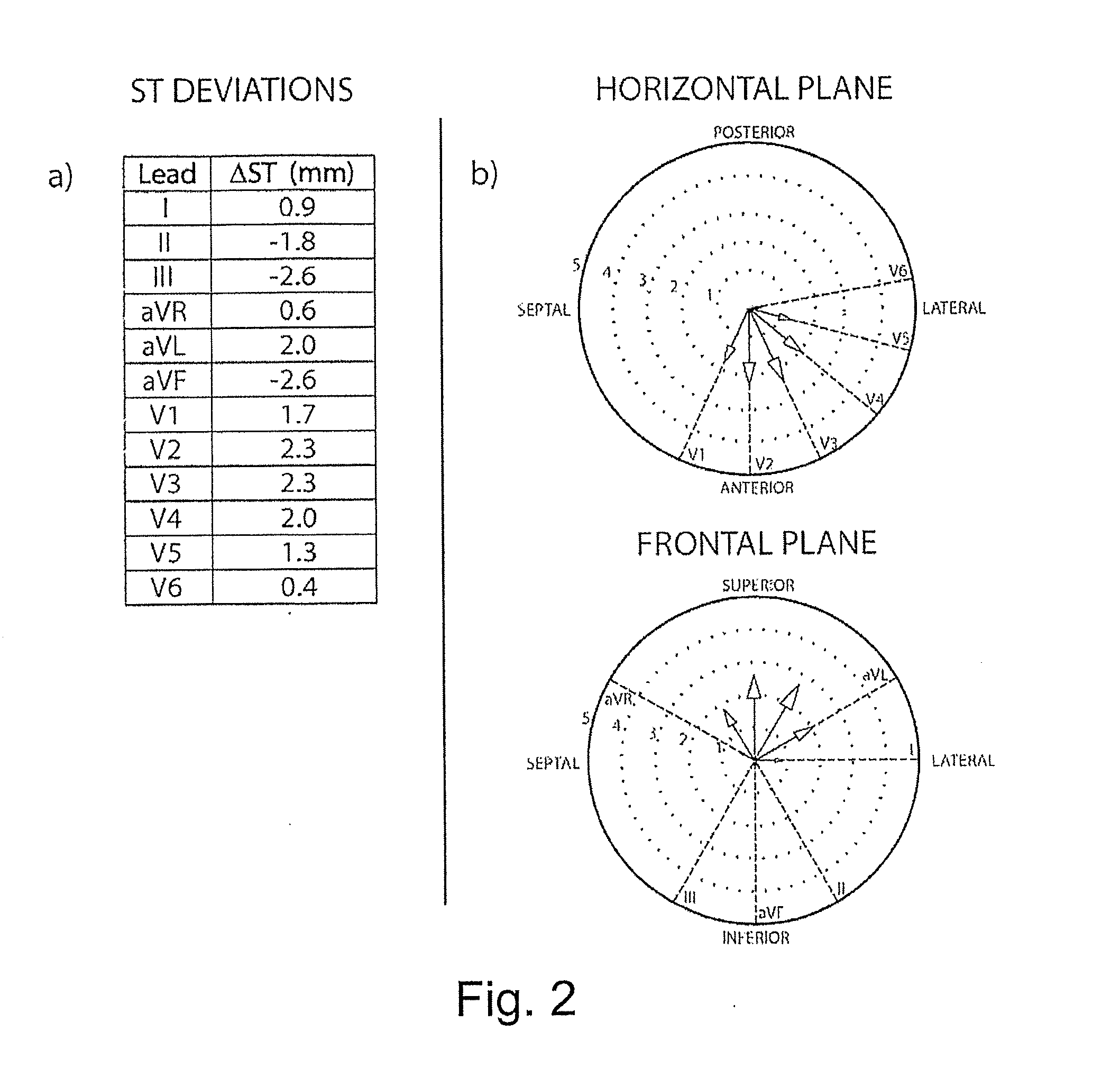System and a method for spatial estimation and visualization of multi-lead electrocardiographic st deviations
a multi-lead electrocardiographic and spatial estimation technology, applied in the field of system and a method for spatial estimation and visualization of multi-lead electrocardiographic st deviations, can solve the problems of intellectually challenging handling, no vcg-based technique has achieved widespread clinical use, and difficult to determine lead contiguity criteria, etc., to achieve fast, easy and accurate diagnosis.
- Summary
- Abstract
- Description
- Claims
- Application Information
AI Technical Summary
Benefits of technology
Problems solved by technology
Method used
Image
Examples
application example
[0055]“ST Compass: Spatial visualization of ST segment deviation”
Introduction:
[0056]The importance of the electrocardiogram (ECG) in the diagnosis of acute myocardial infarction (AMI) is underlined by the clinical definition of the AMI subgroups based on ECG-findings: ST elevation myocardial infarction (STEMI), Bundle Branch Block myocardial infarction (BBBMI) and non-ST elevation myocardial infarction (non-STEMI). Patients with signs of STEMI or BBBMI are triaged for acute reperfusion therapy to ensure maximal myocardial salvage and optimal outcome.
[0057]In clinical practice, the fulfillment of well-defined STEMI criteria (1) determines whether the patient is eligible for reperfusion therapy. The current criteria require ST segment elevation in two contiguous leads of at least 0.1 mV (0.2 mV in leads V2-V3 for men and 0.15 mV for women). If the STEMI criteria are not fulfilled, and newly or presumably newly developed bundle branch block is not present (BBBMI), then the patient is c...
case 1
is a 57-year old male. CAG showed one-vessel disease with occlusion of the left anterior descending artery (LAD) resulting in TIMI-flow 0 immediately prior to intervention.
[0082]The ACC / ESC STEMI criteria are not met by the patient's ECG, since no ST elevation of >2 mm is present in V2-V3 and only one additional lead, lead V4, shows >1 mm ST elevation. Furthermore, the ECG shows signs of a single premature ventricular complex (PVC) at the end of the V1-V3 tracings shown in FIG. 4 (a).
[0083]The expert cardiologists agreed on a classification of “antero-lateral infarction” based on ST elevations in the anterior and lateral precordial leads.
[0084]SPECT-imaging showed myocardial ischemia in the apical part of the left ventricle with a slight anterior extent.
In the ST Compass the ST elevations in leads V2-V6 form a distinct pattern in the antero-lateral direction in the horizontal plane. There are no significant ST deviations in the frontal plane compass. The estimated ST injury vector p...
case 2
[0085]Results from Case 2 are presented in FIG. 5.
[0086]Case 2 is a 62-year old male. CAG showed one-vessel disease with occlusion of the right coronary artery (RCA) resulting in TIMI-flow 0 immediately prior to intervention.
[0087]The ACC / ESC STEMI criteria were met by the patient's ECG, which showed ST elevation of >1 mm in the three contiguous leads II, aVF and III.
[0088]The expert cardiologists agreed on a classification of “postero-infero-lateral infarction” based on ST elevations in the inferior limb / augmented leads (II, aVF, III), ST deviation in the anterior precordial leads (V1-V3) and ST elevation in the lateral precordial leads (V5-V6).
[0089]SPECT-imaging showed myocardial ischemia in the basal part of the left ventricle and on the inferior wall.
[0090]In the ST Compass, the ST depressions in leads V1-V4 and the ST elevations in leads V5-V6 form a distinct pattern in the posterior direction in the horizontal plane. ST elevations in leads II, aVF and III and ST depressions i...
PUM
 Login to View More
Login to View More Abstract
Description
Claims
Application Information
 Login to View More
Login to View More - R&D
- Intellectual Property
- Life Sciences
- Materials
- Tech Scout
- Unparalleled Data Quality
- Higher Quality Content
- 60% Fewer Hallucinations
Browse by: Latest US Patents, China's latest patents, Technical Efficacy Thesaurus, Application Domain, Technology Topic, Popular Technical Reports.
© 2025 PatSnap. All rights reserved.Legal|Privacy policy|Modern Slavery Act Transparency Statement|Sitemap|About US| Contact US: help@patsnap.com



